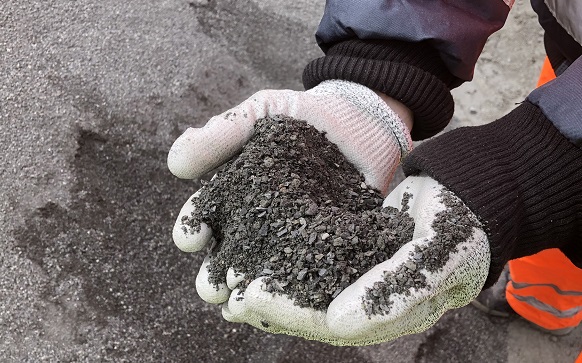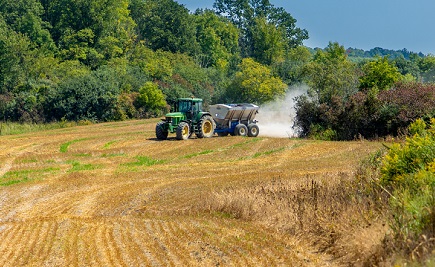LONDON, September 27, 2024 – In a significant development for climate technology, UNDO, a leader in carbon dioxide removal (CDR), has solidified its partnership with Microsoft through a follow-on agreement to advance the science of Enhanced Rock Weathering (ERW). This new deal, announced earlier this week, will see UNDO remove 15,000 tonnes of CO₂ from the atmosphere, expanding upon the initial 5,000 tonnes removed under the 2023 agreement. The collaboration also includes vital funding for scientific research aimed at refining and scaling the ERW process, which accelerates the natural weathering of rocks to permanently store carbon.
Speaking exclusively to CarbonWire, UNDO Founder and CEO, Jim Mann, highlighted the critical importance of the new contract. “This agreement with Microsoft is a clear signal to the market that enhanced rock weathering has the potential to deliver scalable carbon removal. It also shows that UNDO can provide critical scientific research to instil more confidence in this vital climate tech.”
Advancing ERW Science with Microsoft’s Backing
Enhanced Rock Weathering is a natural process where carbon dioxide in rainwater interacts with silicate rocks, such as wollastonite, converting the CO₂ into stable bicarbonates permanently. By spreading crushed silicate rock on agricultural lands, UNDO accelerates this process, which naturally takes millions of years, to remove atmospheric CO₂ in just decades.

Mann further elaborated on how the partnership with Microsoft will enable the company to expand its research efforts. “This deal will fund the setup of our advanced monitoring sites, in collaboration with Newcastle and Guelph Universities, to study various factors including carbon removal, greenhouse gas emissions, and crop yield. The faster weathering of wollastonite in Ontario compared to the basalt we work with in the UK means that the feedback loop for gathering data will be much shorter. Microsoft’s support is making this data-gathering exercise possible.”
This data is crucial for refining the Measurement, Reporting, and Verification (MRV) of ERW, a challenge for the CDR industry due to the complexity of the natural environments in which ERW operates. “We need to ingest and interpret huge amounts of data to verify the carbon removed,” Mann explained, noting the intricate processes involved in measuring and validating ERW’s effectiveness. The partnership with Microsoft will also support the verification efforts, helping UNDO move closer to offering robust, verified carbon removal credits.
Scaling Operations in Canada
The partnership will also see UNDO working closely with Canadian Wollastonite, a wollastonite mine based in Kingston, Ontario, to spread 25,000 tonnes of crushed rock over 5,000 hectares of farmland in the province. This operation will not only remove thousands of tonnes of CO₂ from the atmosphere but also provide agronomic benefits to local farmers, including improved soil pH and crop health.

“Wollastonite contains essential nutrients like calcium and silicon, which help neutralize acidic soils and promote healthier, more productive crops,” said Mann. “We’re not just removing carbon; we’re contributing to sustainable agriculture, reducing the need for chemical fertilizers, and improving soil health.”
UNDO’s focus on community-based carbon removal solutions is central to its mission. “Our operational model brings carbon removal capability to local communities, creating green jobs in rural areas,” Mann explained. “We work with local farmers, hauliers, and field technicians, ensuring that the benefits of our solution are shared as widely as possible.”
Long-Term Vision for ERW and Carbon Removal
As the race to mitigate the worst effects of climate change intensifies, Mann is optimistic about the future of ERW and its role in global carbon management strategies. “We need to be removing at least 10 billion tonnes of CO₂ from the atmosphere every year by 2050,” he emphasized. “Enhanced rock weathering offers a scalable, permanent solution that can play a major role in meeting these targets.”
UNDO is already setting its sights on expansion across Eastern Canada, with plans to establish a range of commercial partnerships to spread millions of tonnes of silicate rock annually. “The Microsoft deal is just the beginning,” said Mann. “We are laying the groundwork for large-scale operations, and our ultimate mission is to reach billion-tonne scale.”
Microsoft’s commitment to being carbon-negative by 2030 aligns with UNDO’s ambitions. Brian Marrs, Senior Director of Energy Markets at Microsoft, said, “We are excited to support UNDO’s ERW projects, which also offer co-benefits for soils, farmers, and rural communities. This partnership is part of our broader strategy to advance climate technology and meet our sustainability goals.”
The Path Ahead
The global carbon removal market is rapidly evolving, with increasing investments from major companies like Microsoft signalling a growing demand for high-quality, verifiable carbon removal solutions. Mann believes that ERW, backed by solid scientific data and community-focused operations, is well-positioned to lead the charge.
“Our mission is not just about removing carbon,” said Mann. “It’s about proving that high-permanence carbon removals should be an integral part of any business’ net-zero strategy. With Microsoft’s continued backing and the data we are gathering, we are confident that ERW will play a pivotal role in shaping the future of carbon management.”

As UNDO continues to push the boundaries of ERW, the company’s collaboration with Canadian partners and institutions like Queen’s University and the University of Guelph will ensure that Canada remains a strategic hub for carbon removal innovations.
“Canada’s commitment to net-zero emissions by 2050, along with its abundant natural resources and favourable geology, makes it the perfect location to scale ERW operations,” said Mann. “We’re excited to be part of this movement and to contribute to a more sustainable future.”
With the momentum building, UNDO is well on its way to achieving its ambitious goal of removing megatonnes of CO₂ from the atmosphere in the coming years, a first step to gigatonne-scale removal, and giving the planet a fighting chance against the escalating climate crisis.
All images courtesy of UNDO